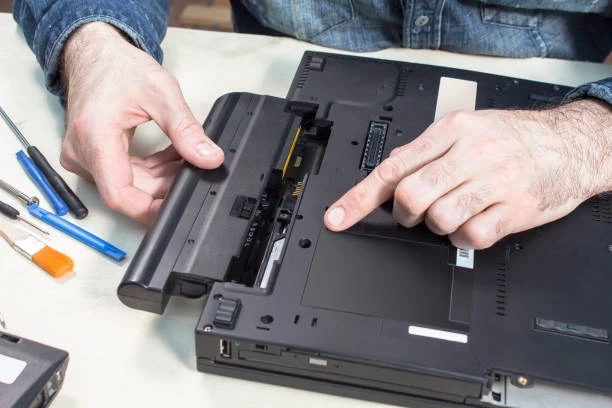Introduction
Your MacBook is an invaluable tool, accompanying you through work, leisure, and everything in between. However, as time passes, one component that tends to degrade is the battery. A MacBook battery has a limited lifespan, and when it starts showing signs of wear and tear, it's essential to consider a replacement. In this comprehensive guide, we'll delve into all aspects of MacBook battery replacement, from understanding the signs that indicate it's time for a replacement to exploring the costs and options available. Whether you own a MacBook Pro or a MacBook Air, this guide will provide you with the expertise you need to ensure your laptop's longevity and optimal performance.
Signs that Your MacBook Battery Needs Replacement
The first step in addressing your MacBook's battery health is recognizing the signs that it might be time for a replacement. Here are some common indicators:
Decreased Battery Life: If your MacBook's battery life has significantly decreased, requiring more frequent charges, it's a clear sign that the battery is deteriorating.
Failure to Hold a Charge: When your MacBook struggles to hold a charge or doesn't charge at all, even when plugged in, it's a strong indicator that the battery is failing.
Overheating: An overheating MacBook can be a result of a compromised battery. If your laptop becomes unusually hot during regular use, it's time to investigate the battery's condition.
Battery Health Indicator: On macOS, you can check your battery's health by clicking the Apple menu, selecting "About This Mac," then "System Report," and finally, "Power." Pay attention to the "Cycle Count" and "Condition" to assess your battery's health.
Understanding MacBook Battery Life
MacBook batteries are designed to retain their effectiveness for a certain number of charge cycles. A charge cycle is defined as the process of charging the battery from 0% to 100%. Most MacBook batteries are rated for approximately 1000 charge cycles. However, this number can vary depending on the model.
MacBook Battery Replacement Options
When it's time to replace your MacBook's battery, you have several options to consider:
Authorized Apple Service Provider: This is the most reliable and recommended option. Authorized providers use genuine Apple parts and provide a warranty on their service. While it might be slightly more expensive, it ensures quality and compatibility.
Apple Store: You can visit an Apple Store to get your MacBook battery replaced. They also use genuine Apple parts and offer expert service. Be sure to make an appointment in advance.
Third-Party Repair Shops: There are many third-party repair shops that offer MacBook battery replacement services. While this option can be cost-effective, it's crucial to research the reputation of the shop and verify the quality of parts they use.
MacBook Pro Battery Replacement
For MacBook Pro users, battery replacement is a critical consideration due to their reliance on high-performance components. Follow the same guidelines mentioned earlier, but ensure that you choose a service provider with experience in MacBook Pro battery replacement.
MacBook Air Battery Replacement
MacBook Air users also need to be vigilant about battery health. Due to the slim design of MacBook Air laptops, battery replacement may be a bit more challenging. Nonetheless, it's essential to address any battery issues promptly.
MacBook Battery Replacement Cost
The cost of MacBook battery replacement can vary depending on the model and service provider. As of my last knowledge update in September 2021, MacBook battery replacement costs ranged from $129 to $199 for most models. Prices may have changed since then, so it's advisable to check with Apple or authorized service providers for the most up-to-date pricing.
Maximizing MacBook Battery Life
To extend the lifespan of your new MacBook battery, consider these tips:
Adjust Display Brightness: Lowering your screen brightness can significantly reduce power consumption.
Manage Background Apps: Close unnecessary apps and processes running in the background to conserve battery.
Use Energy Saver Preferences: Adjust energy-saving settings in your macOS preferences to optimize battery life.
Keep Software Updated: Regularly update your operating system and applications to benefit from power-efficient improvements.
Troubleshooting MacBook Battery Issues
If you encounter problems with your MacBook battery after replacement, reach out to the service provider or Apple for assistance. Issues such as rapid battery drain or unusual behavior should be addressed promptly.
Monitoring MacBook Battery Health
Keep an eye on your MacBook's battery health regularly. You can do this by following the same steps mentioned earlier for checking battery health indicators. This practice helps you identify any issues before they become critical.
Conclusion
Your MacBook's battery is a crucial component that requires attention to ensure your laptop's continued functionality and performance. Recognizing the signs of a deteriorating battery, understanding your replacement options, and adopting good battery management practices will help you make informed decisions regarding MacBook battery replacement. By taking care of your MacBook's battery, you'll ensure that it serves you well for years to come.
Read More:-


